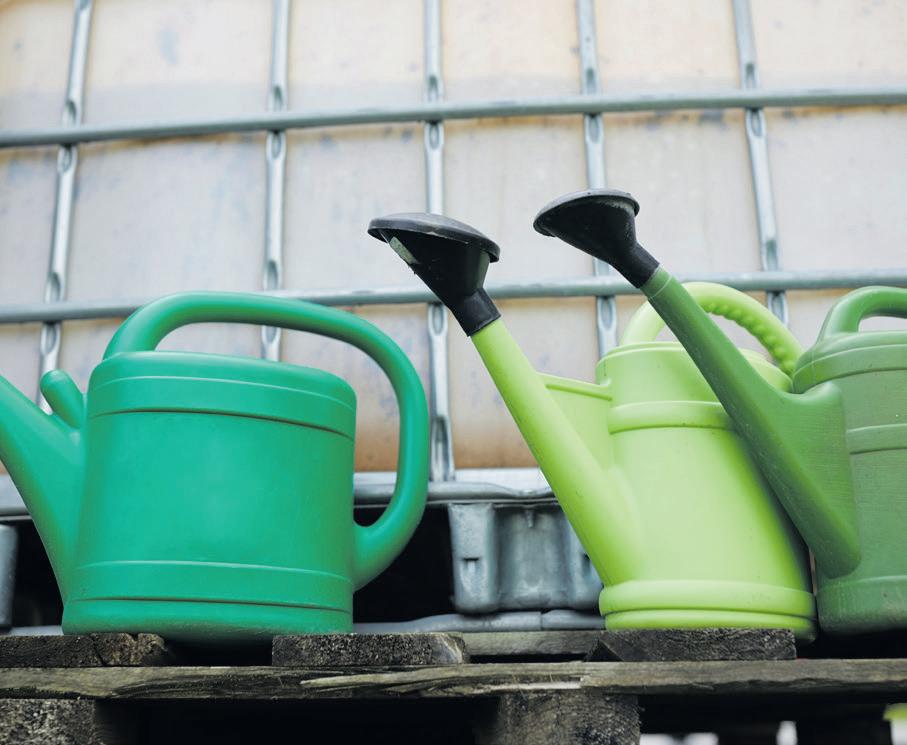
2 minute read
Nurturing Your Garden during the Upcoming El Niño Drought
By Liam Jennings
Australia’s climate is no stranger to the El Niño and La Niña weather patterns, which signifcantly infuence weather conditions across the continent. The El Niño phenomenon, characterised by drier and hotter conditions, can lead to challenging drought periods. With an upcoming El Niño drought predicted, gardeners in Australia need to be prepared to face water restrictions and scorching temperatures. However, with thoughtful planning, water-wise practices, and resilient gardening techniques, it is still possible to maintain a beautiful and thriving garden.
During an El Niño drought, water conservation becomes paramount. Adopting water-wise gardening practices can signifcantly reduce water usage while ensuring your garden remains healthy.
Consider implementing the following strategies:
• Mulching: Apply a thick layer of organic mulch around plants to retain soil moisture, reduce evaporation, and suppress weeds.



• Drip Irrigation: Install drip irrigation systems that target the root zones of plants, delivering water effciently and minimising waste.
• Watering
Schedule: Water your garden in the early morning or late afternoon when temperatures are cooler to reduce water loss through evaporation.
• Watering
Frequency: Adjust your watering schedule to water deeply but less frequently to encourage plants to develop deep root systems that can withstand drought conditions.
• Watering Can and Bucket: Collect rainwater using watering cans or buckets during the wetter periods to use during drier times.

Opt for droughttolerant and native plants in your garden, as they are well-adapted to Australia’s harsh climate. These plants require less water and maintenance, making them ideal for withstanding El Niño drought conditions.
Australian native plants like Grevillea, Kangaroo Paw, and Banksia are excellent choices, as they not only thrive in drought but also attract native wildlife.
When designing your garden, group plants with similar water needs together. This practice, known as hydrozoning, allows you to effciently water your garden without overwatering or under watering certain plants. Placing drought-tolerant plants in one zone and more water-demanding plants in another ensures that each group receives the appropriate amount of water.
During an El Niño drought, temperatures can soar, subjecting plants to heat stress. Create shade and windbreaks in your garden using structures like pergolas, shade cloths, or strategically positioned plants. This will protect sensitive plants from excessive heat and reduce water loss due to evaporation caused by strong winds.
Healthy soil retains moisture better than compacted or depleted soil. Prioritise soil health by adding organic matter, compost, and well-rotted manure to improve water retention. Healthy soil with good drainage allows plants to access water effectively, reducing the need for frequent watering.
If water restrictions become severe, prioritise watering essential plants like fruit trees, vegetables, and plants of sentimental value. Sacrifcing non-essential plants during drought periods ensures that vital resources are directed to the most valuable parts of your garden. Use water-saving techniques to minimise water waste and maximise effciency:
• Grey water Recycling: Consider implementing a grey water system to reuse water from household tasks, such as washing dishes and laundry, to irrigate your garden.
• Rainwater
Harvesting: Install rainwater tanks to collect rainwater during wetter periods, providing an additional water source during droughts.
• Monitor Soil
Moisture: Use soil moisture meters or your fnger to gauge soil moisture levels before watering, preventing overwatering.

• Container
Gardening: Opt for container gardening for more control over water usage, as it allows you to monitor individual plant needs.


During droughts, garden pests may become more prevalent as they search for food and water. Implement integrated pest management strategies to deal with pests effectively while minimising the use of chemicals.
Gardening during an El Niño drought requires adaptability and continuous learning. Observe your garden regularly, assess the performance of different plants, and adjust your gardening practices accordingly. Embrace the learning experience and discover which plants and techniques are most resilient to drought conditions.
Gardening during the upcoming El Niño drought in Australia may present challenges, but with proper planning and water-wise practices, your garden can fourish even in the face of adversity. Choosing drought-tolerant plants, implementing watersaving techniques, and prioritising essential plantings are key to creating a resilient and sustainable garden. With care, patience, and a commitment to responsible gardening, you can cultivate a beautiful and thriving garden that endures through the dry spells and celebrates the return of plentiful rains.










